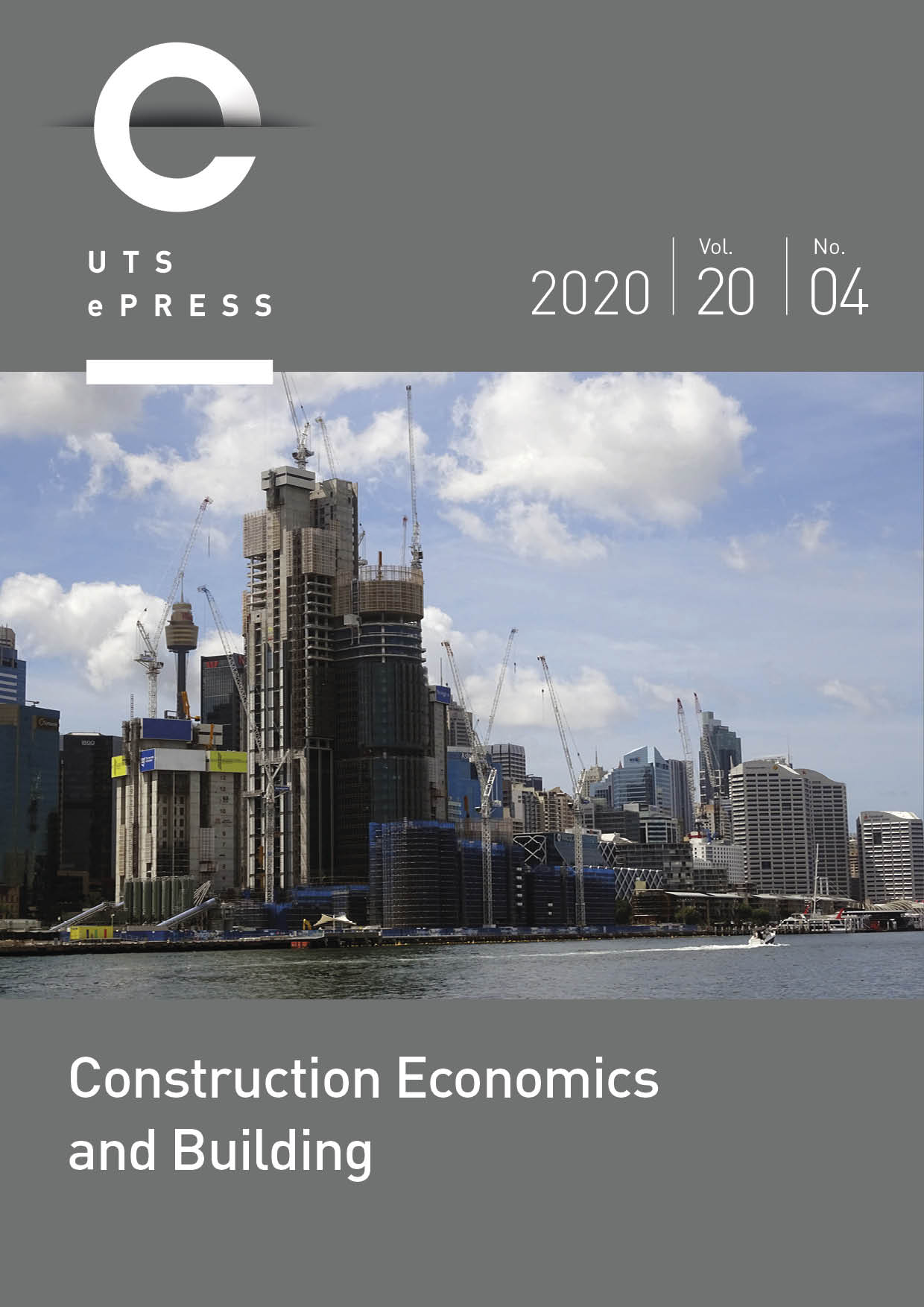Strategic determinants of big data analytics in the AEC sector: a multi-perspective framework
Main Article Content
Abstract
With constant flow of large data sets generated by different organisations, big data analytics promises to be a revolutionary game changer for Architecture, Engineering and Construction (AEC) industry. Despite the potential of Big Data, there has been little research conducted thus far to understand the Big Data phenomenon, specifically in the AEC industry. The objective of this research therefore is to understand the contributing factors for adopting big data in AEC firms. The investigation combined the perceived strategic value of BDA with the TOE framework (technology, organization, and environment), to develop and test a holistic model on big data adoption. A set of hypotheses derived from the extant literature was tested on data from structured surveys of about 365 firms, categorised as construction service firms (engineering and architecture) and construction firms (firms engaged in managing construction projects). The results indicated that the inhibitors and facilitators of BDA adoption are different in the construction services (architecture and engineering) and construction firms. For effective adoption of BDA solutions, the findings will guide the business managers to have realistic expectations of BDA integration challenges in AEC sector.
Article Details
Section
Authors who publish with this journal agree to the following terms:
a) Authors retain copyright and grant the journal right of first publication with the work simultaneously licensed under a Creative Commons Attribution License that allows others to share and adapt the work with an acknowledgement of the work's authorship and initial publication in this journal.
b) Authors are able to enter into separate, additional contractual arrangements for the non-exclusive distribution of the journal's published version of the work (e.g., post it to an institutional repository or publish it in a book), with an acknowledgement of its initial publication in this journal.
c) Authors are permitted and encouraged to post their work online (e.g., in institutional repositories or on their website) prior to and during the submission process, as it can lead to productive exchanges, as well as earlier and greater citation of published work (See The Open Access Citation Advantage Service). Where authors include such a work in an institutional repository or on their website (ie. a copy of a work which has been published in a UTS ePRESS journal, or a pre-print or post-print version of that work), we request that they include a statement that acknowledges the UTS ePRESS publication including the name of the journal, the volume number and a web-link to the journal item.
d) Authors should be aware that the Creative Commons Attribution (CC-BY) License permits readers to share (copy and redistribute the work in any medium or format) and adapt (remix, transform, and build upon the work) for any purpose, even commercially, provided they also give appropriate credit to the work, provide a link to the license, and indicate if changes were made. They may do these things in any reasonable manner, but not in any way that suggests you or your publisher endorses their use.
